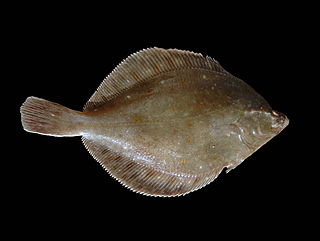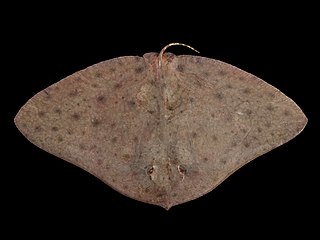
Mackerel is a common name applied to a number of different species of pelagic fish, mostly from the family Scombridae. They are found in both temperate and tropical seas, mostly living along the coast or offshore in the oceanic environment.

Herring are forage fish, mostly belonging to the family of Clupeidae.

The Squaliformes are an order of sharks that includes about 126 species in seven families.

The Beryciformes are a poorly-understood order of carnivorous ray-finned fishes consisting of 7 families, 30 genera, and 161 species. They feed on small fish and invertebrates. Beyond this, little is known about the biology of most member species because of their nocturnal habits and deepwater habitats. All beryciform species are marine and most live in tropical to temperate, deepwater environments. Most live on the continental shelf and continental slope, with some species being found as deep as 2,000 m (6,600 ft). Some species move closer to the surface at night, while others live entirely in shallow water and are nocturnal, hiding in rock crevices and caves during the day. Several species are mesopelagic and bathypelagic. Beryciformes' bodies are deep and mildly compressed, typically with large eyes that help them see in darker waters. Colors range from red to yellow and brown to black, and sizes range from 8–61 cm (3.1–24.0 in). Member genera include the alfonsinos, squirrelfishes, flashlight fishes, fangtooth fishes, spinyfins, pineconefishes, redfishes, roughies, and slimeheads. A number of member species are caught commercially, including the alfonsino, the splendid alfonsino, and the orange roughy, the latter being much more economically important. Some species have bioluminescent bacteria contained in pockets of skin or in light organs near the eyes, including the anomalopids and monocentrids.

The Gonostomatidae are a family of mesopelagic marine fish, commonly named bristlemouths, lightfishes, or anglemouths. It is a relatively small family, containing only eight known genera and 32 species. However, bristlemouths make up for their lack of diversity with relative abundance, numbering in the hundreds of trillions to quadrillions. The genus Cyclothone is thought to be one of the most abundant vertebrate genera in the world.

Fangtooths are beryciform fish of the family Anoplogastridae that live in the deep sea. The name is from the Greek anoplo, meaning "unarmed", and γαστήρ, meaning "stomach". With a worldwide distribution in tropical and cold-temperate waters, the family contains only two very similar species in one genus, with no known close relatives.

Pleuronectidae, also known as righteye flounders, are a family of flounders. They are called "righteye flounders" because most species lie on the sea bottom on their left sides, with both eyes on their right sides. The Paralichthyidae are the opposite, with their eyes on the left side. A small number of species in Pleuronectidae can also have their eyes on the left side, notably the members of the genus Platichthys.
Notacanthidae, the deep-sea spiny eels, are a family of fishes found worldwide below 125 m (410 ft), and as deep as 3,500 m (11,500 ft). The earliest known spiny eel is Pronotacanthus sahelalmae, from the Santonian of what is now Lebanon.

Echinorhinus is the only extant genus in the family Echinorhinidae.

Cutthroat eels are a family, Synaphobranchidae, of eels, the only members of the suborder Synaphobranchoidei. They are found worldwide in temperate and tropical seas.

Spinyfins are a family, Diretmidae, of trachichthyform fishes. The family name is derived from the type genus, Diretmus, from Greek, di meaning "two" and eretmos meaning "oar". They are found worldwide in deep waters, as deep as 2,000 m (6,600 ft).

Snipe eels are a family, Nemichthyidae, of eels that consists of nine species in three genera. They are pelagic fishes, found in every ocean, mostly at depths of 300–600 m (980–1,970 ft) but sometimes as deep as 4,000 m (13,000 ft). Depending on the species, adults may reach 1–2 m (39–79 in) in length, yet they weigh only 80–400 g (2.8–14.1 oz). They are distinguished by their very slender jaws that separate toward the tips as the upper jaw curves upward. The jaws appear similar to the beak of the bird called the snipe. Snipe eels are oviparous, and the juveniles, called Leptocephali, do not resemble the adults but have oval, leaf-shaped and transparent bodies. Different species of snipe eel have different shapes, sizes and colors. The similarly named bobtail snipe eel is actually in a different family and represented by two species, the black Cyema atrum and the bright red Neocyema erythrosoma.

The butterfly rays are the rays forming the genus Gymnura and the family Gymnuridae. They are found in warm oceans worldwide, and occasionally in estuaries.

The viviparous brotulas form a family, the Bythitidae, of ophidiiform fishes. They are known as viviparous brotulas as they generally bear live young, although there are indications that some species do not. They are generally infrequently seen, somewhat tadpole-like in overall shape and mostly about 5–10 cm (2–4 in) in length, but some species grow far larger and may surpass 60 cm (2 ft).

The Moridae are a family of cod-like fishes, known as codlings, hakelings, and moras.

Tonguefishes are flatfish in the family Cynoglossidae. They are distinguished by the presence of a long hook on the snout overhanging the mouth, and the absence of pectoral fins. Their eyes are both on the left side of their bodies, which also lack a pelvic fin. This family has three genera with a total of more than 140 species. The largest reaches a length of 66 cm (26 in), though most species only reach half that size or less. They are found in tropical and subtropical oceans, mainly in shallow waters and estuaries, though some species are found in deep sea floors, and even a few in rivers.

The Rhinochimaeridae, commonly known as long-nosed chimaeras, are a family of cartilaginous fish. They are similar in form and habits to other chimaeras, but have an exceptionally long conical or paddle-shaped snout. The snout has numerous sensory nerve endings, and is used to find food such as small fish. The first dorsal fin includes a mildly venomous spine, used in defense.

Fish are very diverse animals and can be categorised in many ways. Although most fish species have probably been discovered and described, about 250 new ones are still discovered every year. According to FishBase about 34,800 species of fish had been described as of February 2022, which is more than the combined total of all other vertebrate species: mammals, amphibians, reptiles and birds.
Beryx mollis is a member of the family Berycidae. It can be found in the Northwest Pacific near Japan and in the western Indian Ocean where it live at depths between 100 and 500 m. It can reach sizes of up to 30.0 cm (11.8 in) SL.
The yelloweye nannygai or yelloweye redfish is a member of the family Berycidae. It is native to the coast of southern Australia where it lives on the continental shelf at depths between 80 and 300 m. It can reach sizes of up to 51.0 cm (20.1 in) TL.

















